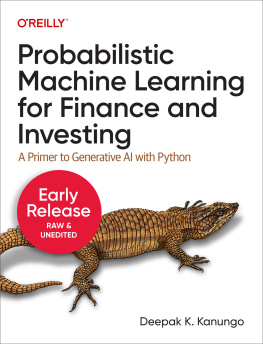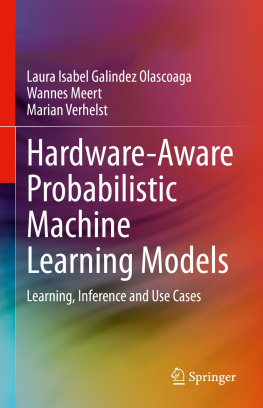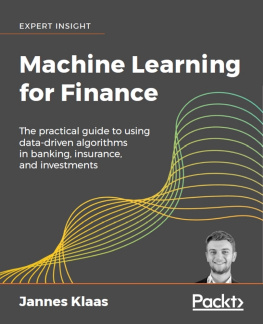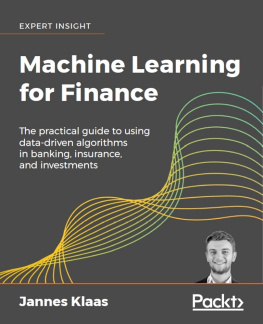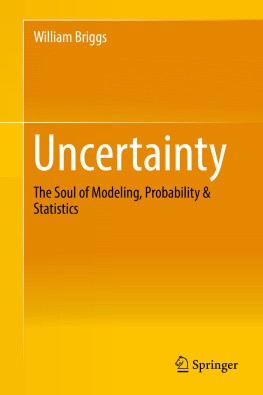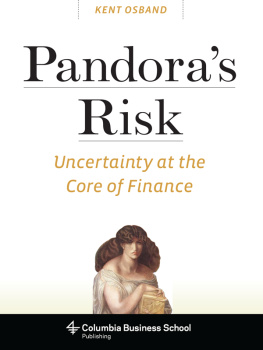Chapter 1. The Need for Probabilistic Machine Learning
All models are wrong, but some are useful.
A Note for Early Release Readers
With Early Release ebooks, you get books in their earliest formthe authors raw and unedited content as they writeso you can take advantage of these technologies long before the official release of these titles.
This will be the 1st chapter of the final book. Please note that the GitHub repo will be made active later on.
If you have comments about how we might improve the content and/or examples in this book, or if you notice missing material within this chapter, please reach out to the author at book@hedgedcapital.com.
A map will enable you to go from one geographic location to another. It is a very useful mathematical model for navigating the physical world. It becomes even more useful if you automate it into a GPS system using artificial intelligence (AI) technologies. However, neither the mathematical model nor the AI-powered GPS system will ever be able to capture the experience and richness of the terrain it represents. Thats because all models have to simplify the complexities of the real world, thus enabling us to focus on some of the features of a phenomenon that interest us.
George Box, a statistician, famously quipped, All models are wrong, but some are useful. This deeply insightful quip is our mantra. We accept that all models are wrong because they are inadequate and incomplete representations of reality. Our goal is to build financial systems based on models and supporting technologies that enable useful inferences and predictions for decision-making and risk management in the face of endemic uncertainty, incomplete information and inexact measurements.
All financial models, whether derived theoretically or discovered empirically by humans and machines, are not only wrong but are also at the mercy of three types of errors. In this chapter, we explain this trifecta of errors with an example from consumer credit and explore it using Python code. This exemplifies our claim that inaccuracies of financial models are features, not bugs. Afterall, we are dealing with people, not pendulums.
Finance is not an accurate physical science like physics dealing with precise estimates and predictions as academia will have us believe. It is an inexact social study grappling with a range of values with varying plausibilities that change continually, often abruptly.
We conclude the chapter by explaining why AI in general and probabilistic machine learning (ML) in particular offers the most useful and promising theoretical framework and technologies for developing the next generation of systems for finance and investing.
What is a model?
AI systems are based on models. A model maps functional relationships among its inputs and outputs variables based on assumptions and constraints. In general, input variables are called independent variables and output variables are called dependent variables.
In high school, you learned that the equation of any line in the X-Y plane can be expressed as y = mx + b where m is the slope and b is the y-intercept. For example, if you assume that consumer spending, the output/dependent variable y, has a linear relationship with personal income, the input/independent variable x, the equation for the line is called a model for consumer spending. Moreover, the slope m and the intercept b, are referred to as the models parameters. They are treated as constants and their specific values define unique functional relationships or models.
Depending on the type of functional relationships, its parameters, the nature of inputs and outputs variables, models may be classified as deterministic or probabilistic. In a deterministic model, there are no uncertainties about the type of functional relationship, its parameters, the inputs or the outputs of the model. The exact opposite is true for probabilistic models discussed in this book.
Finance Is Not Physics
Adam Smith, generally recognized as the founder of modern economics, was in awe of Newtons laws of mechanics and gravitation [1]. Ever since then, economists have endeavored to make their discipline into a mathematical science like physics. They aspire to formulate theories that accurately explain and predict the economic activities of human beings at the micro and macro levels. This desire gathered momentum in the early 20th century with economists like Irving Fisher and culminated in the Econophysics movement of the late 20th century.
Despite all the complicated mathematics of modern finance, its theories are woefully inadequate, almost pitiful, especially when compared to those of physics. For instance, physics can predict the motion of the moon and the electrons in your computer with jaw-dropping precision. These predictions can be calculated by any physicist, at any time, anywhere on the planet. By contrast, market participants - traders, investors, analysts, finance executives - have trouble explaining the causes of daily market movements or predicting the price of an asset at any time, anywhere in the world.
The political economics of misrepresenting a Nobel Prize
In his will, Alfred Nobel did not create a prize in economics or mathematics or any other discipline besides physics, chemistry, medicine, literature and peace. The Sveriges Riksbank Prize in Economic Sciences in Memory of Alfred Nobel, now commonly and mistakenly referred to as the Nobel Prize in economics, was created by the Swedish Central Bank in 1968. The central bank funds the award in perpetuity and pays the Nobel Foundation to administer it like it does the Nobel prizes willed by its benefactor.

